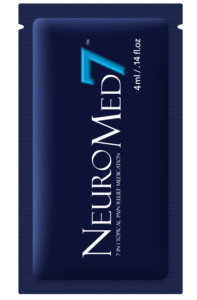Topical anesthetic cream
Topical anesthetic cream is effective for patients undergoing superficial dermatological and laser procedures.
Topical anesthetic cream has been valuable for providing effective, non-invasive anesthesia for superficial cosmetic and laser procedures. Its role in reducing discomfort has been proven in vascular, pigmented and epilation laser treatments, as well as for cosmetic and other injectables.

Preferred Topical Anesthetic Cream:
Topical anesthetic cream works when the active pharmaceutical ingredient (API), typically, lidocaine or lidocaine in combination with any one or more of: benzocaine, prilocaine or tetracaine, binds to the voltage-gated sodium channels, blocking sodium influx, thereby inhibiting nerve cell depolarization and impulse conduction. Increasing numbers of topical anesthetic creams have become available in recent years. Factors influencing the choice of topical anesthetic creams include efficacy, onset time, patient preference and cost considerations.
Factors that influence efficacy and onset of topical anesthetic cream products include delivery mechanism, whether physical or chemical. Not all topical anesthetic cream products are the same. The formulations vary widely. Some include ingredients known as penetration enhancers or drivers. These drivers are included in topical anesthetic cream products in an effort to speed the onset as well as improve the efficacy. The reason for their inclusion in many formulations is because the API’s do not typically absorb well on their own. The skin is designed with a barrier layer as the most superficial of all. This layer, the stratum corneum is made up of protein (keratinoid) and fatty structures (bi-lipid). One of its primary functions is to keep contaminants out of the deeper layers of skin as well as the body tissues beneath.
Drivers included in topical anesthetic cream are included in formulations to temporarily disrupt the barrier later making it more permeable to the anesthetic API(s). Without these drivers, the API(s) may sit on the skin for prolonged periods of time not conducive to satisfying either physician of patient needs.
The most common of the drivers are:
MSM
Ethoxydiglycol
Propylene glycol
Isopropyl myristate
Urea
When using a topical anesthetic cream there remains an inherent risk of cross-contamination that is associated with using products contained in multi-use containers, such as jars and tubes that are reopened and reused. When opened it is possibly for microbes and other contaminants to enter the container, especially if used by more than one clinician and more than one patient. Therefore, a topical anesthetic cream that is contained in single-use packaging can serve to minimize this risk which could lead to unforeseen adverse events.
NeuroMed 7 Single-use, sanitary 4 mL packets – lidocaine – smooth and creamy grit free formula – supplied in single-use sanitary packets – includes penetration enhancers in its formulation


